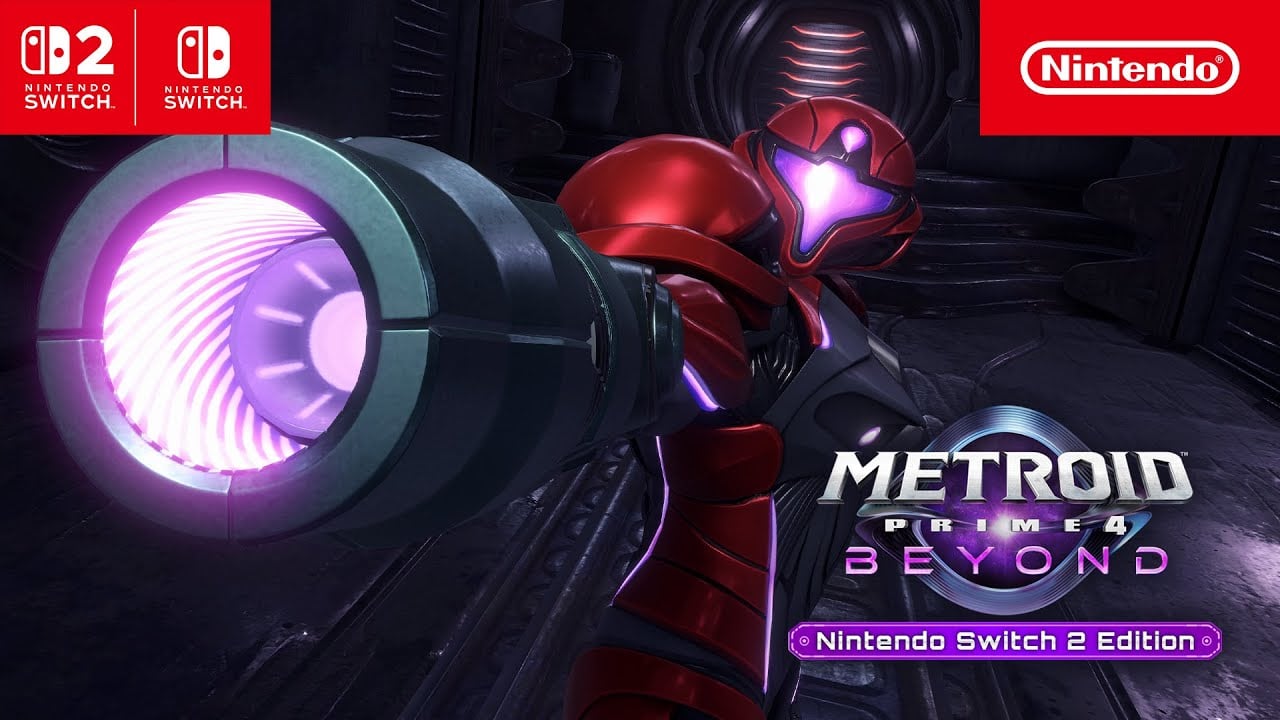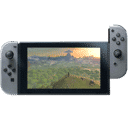
Summary:
The latest look at Metroid Prime 4: Beyond puts Samus Aran back in the spotlight with a tight, mood-driven trailer that mixes brief combat clips, dense atmosphere, and blink-and-you’ll-miss-them lore cues. We see Viewros—a lush, ancient world that feels hostile and inviting at once—along with a few shots that point to returning systems: scanning, visor-led discovery, and a careful dance between cautious exploration and sudden firefights. The timing is clear: the “Survive” cut arrives with launch just around the corner, and it carries the cadence of a confident final push rather than a first tease. For anyone weighing platforms, Nintendo sets expectations: Switch 2 brings upgraded visuals and frame rates, while the original Switch still gets the full adventure. Under the surface, smart edits hint at level loops, traversal puzzles, and combat windows that reward patience over brute force. If you want a quick, human grasp of what’s actually new—beyond the headline date—this breakdown focuses on how the trailer communicates feel: the weight of the arm cannon, the tempo of movement, and the way Viewros tells its story through ruins, fauna, and sound. By the end, you’ll know what’s confirmed, what’s strongly signaled, and how to get ready for December 4 without spoiling the fun.
The new Survive trailer sets the tone and confirms the path to launch
The latest cut does something very specific: it narrows focus. Instead of cramming in feature lists or mission briefings, it leans on rhythm—short, confident edits that show just enough. Combat flares for a second, then retreats into ambience. A visor overlay flickers, then fades. It’s a language that says, “You’ll need to pay attention,” which is exactly what a first-person Metroid should evoke. The date at the end seals the intent and gives players a solid target to plan around. With about a month between the trailer drop and release, expectations are calibrated for final polish rather than big pivots. You feel the team’s restraint: show, don’t spoil; tease, don’t flood. That balance keeps mystery intact while giving returning fans the reassurance that yes, the cadence and mood of Prime are back.

What the pacing implies about scope and confidence
Quick cuts often hide rough edges; here, they highlight certainty. Weapons cycle without stutter, traversal chains look readable, and enemy animations hold together under fast edits. The score swells, dips, and leaves room for environmental audio, which suggests a soundscape that matters in play—distant chittering, the metallic reverb of charged shots, the sigh of alien vents. It reads as measured and confident, a sign that the studio is showing the slice that best represents the whole rather than masking it. That’s a good signal this close to launch.
Key story beats: Samus, Sylux, and the mystery of Viewros
Even without overt narration, the trailer frames a clear arc: Samus arrives under duress, reads the world through tech and instinct, and is stalked—possibly tested—by a familiar shadow. Longtime watchers will clock Sylux as the likely foil, a hunter whose motives orbit Federation secrets and personal vendetta. Viewros itself feels like a character: ancient stone wrapped in living green, artifacts that hum with a half-remembered purpose, and pathways that appear to respond to power beams and psychic resonance. Nothing is spelled out, but the shapes are there: a “why me?” premise, a “prove it” antagonist, and a planet that remembers more than it reveals.
How the trailer hints at factions and language
Glyphs linger on walls for just a hair longer than needed. That’s deliberate. Prime entries often ask you to piece together cultures from fragments—logs, murals, the architecture of a bridge that needs a specific current. Expect the same here, with Viewros’s history drip-feeding through scans and optional detours. It’s a way to let lore fans dig deep while letting speed-leaning players keep moving. Everyone gets the core arc; curious minds find more.
How the “Survive” cut teases mechanics without spoiling the hunt
Nothing breaks immersion faster than over-explaining abilities. The “Survive” trailer instead shows small, readable problems with quick payoffs: a door pulsing with an unfamiliar frequency, a platform suspended by organic tendrils, a creature that flinches in a specific window. You don’t see the whole solution tree—you just get the setup and the “aha” spark. That rhythm is Prime’s heartbeat. It whispers: look, test, learn. For returning players, it says the format is intact; for new players, it shows that puzzles are physical and intuitive, not walls of text.
Environmental verbs you can infer from the footage
Magnetic pulls on suspended metal, beam refractors that bend shots along rails, and tendril switches that react to charged states all float through the footage. Coupled with visor overlays that highlight paths and weak points, the kit looks built for playful iteration. You’ll try something, read the reaction, and adjust. The trailer’s restraint makes those tiny cause-and-effect moments pop without needing a HUD tour.
Controls and feel: why Switch 2 elevates precision without losing the classic rhythm
First-person exploration lives or dies on comfort. The Switch 2 edition emphasizes smoother input and extra control options while keeping the flow that defines Prime. The promise is simple: more reliable aiming, quicker camera snaps, and better consistency in dense biomes where foliage, fog, and volumetrics test both hardware and player endurance. Crucially, none of this looks like a redesign; it reads as a refinement of a style that already prized deliberate motion and precise timing. If you love nudging the reticle into a weak spot right as a creature opens its guard, this is the good stuff.
Why that matters for classic Metroid pacing
Prime games reward patience and awareness. Smooth input lowers the friction that can make backtracking feel heavy. When the camera glides, jumps land where you intend, and quick-swap actions stick every time, the world opens up. It makes detours feel like choices, not chores, and keeps boss patterns readable when pressure spikes. The trailer’s terse edits won’t show button layouts, but the movement reads clean, and that’s what counts.
Visual targets and performance modes: what to expect on TV and handheld
Nintendo positions the Switch 2 edition as the premium way to see Viewros, with higher resolution, HDR support, and stronger frame-rate targets for both docked and handheld play. That means denser foliage without shimmer, cleaner highlights on wet stone, and more stable motion when particle effects kick off in tight rooms. On original Switch, the cut still looks cohesive, suggesting careful asset scaling and material work that holds up on a 6-inch screen. The point isn’t to split the audience; it’s to ensure everyone gets a stable experience, with Switch 2 adding polish where it counts—clarity in motion and color depth in darker biomes.
What HDR and higher frame rates change in practice
Metroid’s palette thrives on contrast—cold blues against amber glows, pitch corridors split by a visor’s warm readout. HDR helps those edges breathe. Frame-rate stability matters even more: it keeps scanning readable when you pan slowly and makes tight combat windows fair. On TV, that turns set-pieces into showcase moments; in handheld, it keeps fatigue low during long exploration sessions. The trailer shows both contexts with confidence.
The return of scanning, visors, and environmental storytelling
Scan pulses, icons, and faint overlays suggest that the cornerstone of Prime’s identity is intact. Scanning isn’t busywork here; it’s the way the world talks. It tells you why a bridge collapsed, how a creature adapted, and where a power node routes under the floor. The best part is optionality: you can catch the core beats and keep moving, or you can slow down and let the planet’s history accumulate into a picture. The trailer’s quick peeks at inscriptions and organic machinery look like invitations to listen rather than chores to clear.
Visor variety and situational reading
Thermal, x-ray, and spectrum-twisting views have always been more than gimmicks; they’re filters that change how a room works. The footage’s brief distortions point to a familiar toolset with some fresh twists—perhaps a resonance-read that lines up beam rails or exposes conductive plant veins. Those moments keep revisits fresh: a hallway you sprinted through early becomes a playground when a new visor reframes its geometry.
Combat flow: parries, beams, and situational tools that reward patience
Combat clips highlight discipline over spray. You see tells, you wait for the open, and you strike. That might be a charged shot into a cracked carapace, a sidestep that opens a flank, or a timed parry that buys space. Small gadgets pop too—sticky bursts on wall-crawlers, a beam refractor solving both a puzzle and a fight. Prime is at its best when your kit is a toolbox, not a checklist. The trailer’s language says: read the room, then pick the right tool. Button-mashing will get you punished; patience pays.
Boss design cues you can spot in seconds
Large silhouettes with glowing joints, arena geometry that doubles as cover and traversal, and phase shifts that ask you to change tactics mid-fight—those are classic Prime tells, and they’re here. Add in smarter pathfinding and cleaner frames and you get battles that feel stern but fair. Expect one or two “lock the door and learn” encounters early to set expectations before the mid-game opens up.
Level design on Viewros: loops, shortcuts, and lock-and-key mastery
You can read loops in the edit: a door you see from a balcony, a ledge that screams “later,” a lift that likely connects two biomes once power is restored. That’s the Prime promise—maps that feel like puzzle boxes, not corridors. You’ll nudge forward, unlock a hinge, and notice how routes fold back on themselves until the whole space becomes familiar. The trailer’s emphasis on vertical shots—lianas, trees, cliff-side ruins—suggests a strong sense of height, which pairs nicely with visor-based traversal tricks and late-game mobility upgrades.
Traversal toys that reshape rooms
Beam rails, magnetic pulls, and organic lifts hint at a kit that keeps expanding without overwhelming. The edits show Samus chaining actions—shoot, reposition, scan, commit—without drowning in prompts. That balance is crucial: the best Metroid maps feel like conversations with space. You ask a room a question; it answers with a nudge, a buzz, or a soft click as something rotates into place.
Quality-of-life updates for modern players
Little details matter. Readable objective nudges without neon waypoints. Faster reloads on retry. Clean UI fonting that works on a couch and on a train. The trailer doesn’t list these, but the polish shows: iconography is crisp, hit feedback is obvious, and door states are legible at a glance. Expect thoughtful save distribution and snappier load times on Switch 2 thanks to storage throughput. That’s the quiet work you feel over a long weekend play session.
Accessibility and comfort considerations
Expect options that let more players enjoy the ride—camera sensitivity sliders with granular steps, remapping where it makes sense, motion assist that can be toggled to taste, and text readability that holds up on handheld. None of this undercuts challenge; it just reduces friction so the challenge is about the world, not the interface.
Amiibo timing, pre-orders, and edition choices
Nintendo’s calendar puts compatible figures and the launch date in close orbit, which makes planning simple for collectors. If you want shelf pieces that also unlock small in-game perks, sync your pre-order windows so you’re not scrambling. The base adventure is complete either way; figures and physical extras are icing. For digital buyers, Switch 2 upgrade options sit plainly on the store pages so you can pick the setup that fits your hardware without second-guessing.
Physical vs. digital: how to decide quickly
Ask two questions: do you replay Prime entries and value instant access, or do you prefer a box, manual, and a place on the shelf? Performance is identical within a platform; your choice is about convenience and collection style. If you bounce between rooms and commute play, digital is frictionless. If you savor launches as events and like keeping series lines together, physical scratches that itch.
Tips to prepare before day one—save time and hit the ground running
Clear space on your system storage, especially on Switch where room can get tight. Update your Joy-Con or controller firmware, test your preferred sensitivity, and make a tiny “reading habit” rule for yourself: scan three things in every new room. That alone keeps lore flowing without turning you into a completionist accountant. Consider a fresh microSD with fast throughput if you’re all-digital, and if you’re new to Prime, try a warm-up session in Metroid Prime Remastered to reacquaint your brain with visor-centric reading. You’ll thank yourself when the first locked door asks for a little lateral thinking.
Mindset matters more than gear
Prime rewards curiosity. If you get stuck, circle, listen, and look up. The solution is usually in the room, not in a menu. Build a rhythm: explore wide, then narrow. Mark mental landmarks. Trust the map less than your eyes. The trailer’s edits promise that this approach still pays dividends.
Why December 4 matters for Nintendo’s 2025 calendar
The date anchors a late-year crescendo. It gives the platform a prestige capstone and sets up a clean handoff into the holiday window. For fans, it means launch week energy: fresh clips, discovery threads, and that shared feeling of piecing a new world together. It also spreads pressure across both hardware tiers—Switch and Switch 2—ensuring the audience can jump in regardless of upgrade timing. In short: it’s a confident slot that says the game is ready to stand on its own.
The community moment you can expect
Metroid launches generate collaborative problem-solving. You’ll see map redraws, sequence break experiments, and boss breakdowns within days. The trailer’s careful hints will explode into full strategies, and that’s fun to ride whether you’re a day-one runner or a weekend explorer. Plan your pace, avoid spoilers if you care, and enjoy the chatter.
What this means for series newcomers and longtime veterans
If you’ve never played a Prime entry, this is a fresh start with decades of craft behind it. The trailer shows a game that respects your time, teaches through play, and rewards paying attention. If you’ve been here since Tallon IV, the DNA looks intact—tighter input, cleaner frames, richer worlds, same patience-driven loop. The result is a confident return that aims to make both groups feel at home: approachable at the edges, demanding at the center, and generous with little “I figured it out” sparks that make the series special.
The new look doesn’t reinvent what works; it refines it. We get a world worth learning, tools worth mastering, and a date that turns anticipation into planning. That’s the promise the trailer makes—and it’s one that fans can hold onto as launch approaches.
Conclusion
Metroid Prime 4: Beyond speaks in a language fans know: quiet confidence, readable problems, and a world that rewards curiosity. The latest trailer keeps spoilers in check while surfacing the feel—how movement flows, how combat opens, and how Viewros hums with secrets. With a firm December 4, 2025 launch and clear platform expectations, the runway is set. Prepare by tuning your controls, making space, and refreshing your visor instincts. Then step in with patience. The game seems built to answer every good question you ask.
FAQs
- When is Metroid Prime 4: Beyond releasing?
- It’s set for Thursday, December 4, 2025, with availability on both Nintendo Switch and Nintendo Switch 2.
- What’s different on Nintendo Switch 2?
- Expect enhanced resolution, HDR support, and higher frame-rate targets alongside refined input options. The core adventure is the same; Switch 2 emphasizes clarity and smoothness.
- Does the game still use scanning and visors?
- Yes. The latest footage shows visor overlays and scan prompts, signaling a return of environmental storytelling and optional lore that deepens the world without forcing detours.
- Is Sylux involved?
- The marketing strongly hints at Sylux’s presence as a recurring foil, aligning with longstanding series teases. Exact story beats are held back to avoid spoilers.
- Should I replay earlier Prime entries first?
- It’s not required, but revisiting Metroid Prime Remastered can warm up your scanning habits and sense of spatial reading, making day one feel smoother.
Sources
- Metroid Prime 4: Beyond reveals new “Survive” trailer, Nintendo Everything, November 4, 2025
- Metroid Prime 4: Beyond ‘Survive’ trailer, Gematsu, November 4, 2025
- New Trailer Finally Gives Us A Decent Look At Metroid Prime 4, Kotaku, November 4, 2025
- New Nintendo Direct kicks off the Super Mario Bros. 40th anniversary and brings slate of new announcements, Nintendo.com, September 12, 2025
- Metroid Prime 4: Beyond | Nintendo Switch games, Nintendo UK, Accessed November 5, 2025














